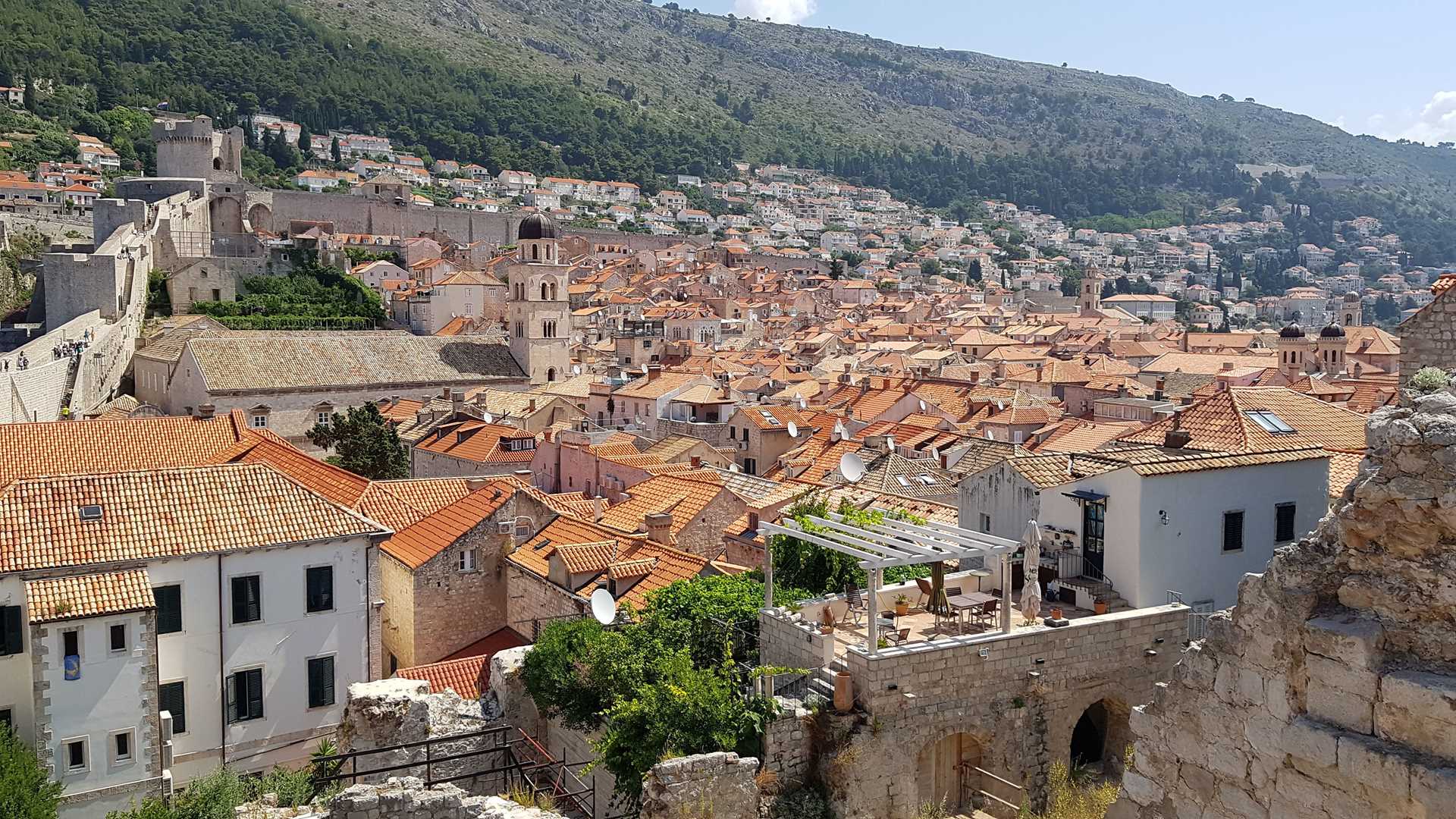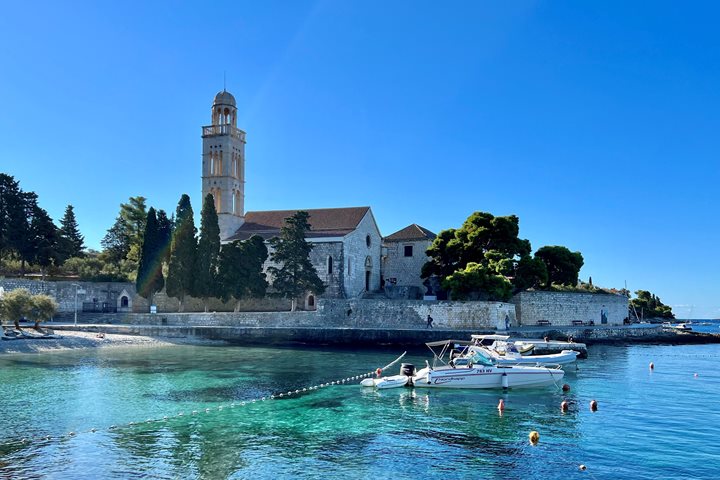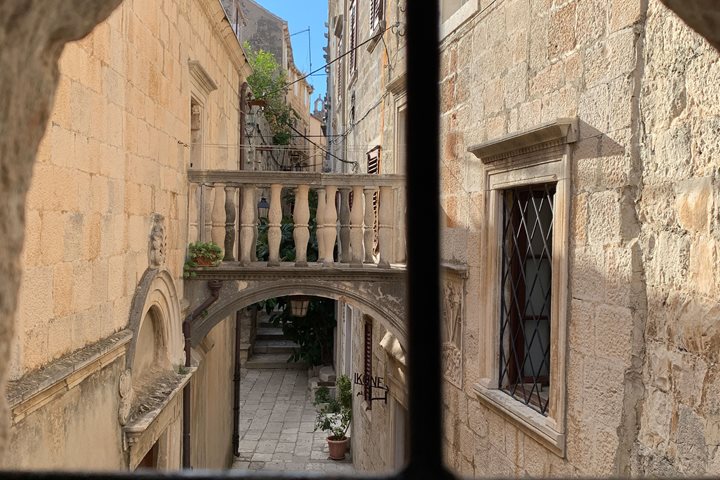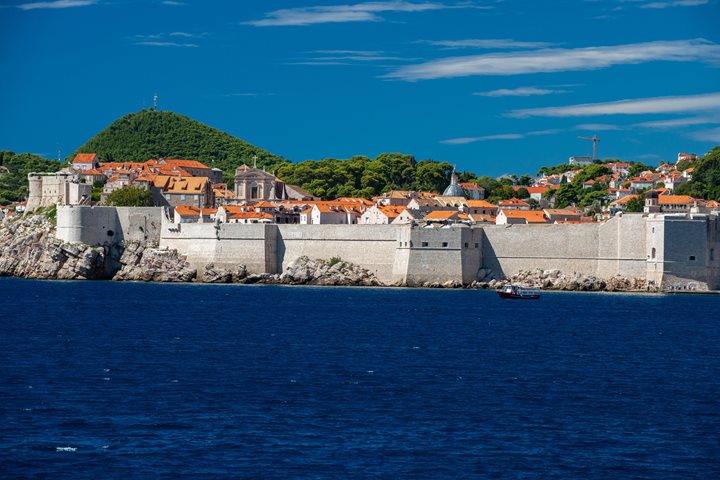We motored into the lee of the small island of Lokrum directly in sight of the southern wall of this magical city of Dubrovnik and dropped anchor at 7:28 AM. There was little breeze, the sky was filled with white cumulous clouds set against a cerulean blue and the temperature 80. Immediately facing us, across the entrance to the old harbor, were the massive high walls of the fortress of St. John and the Sea Gate of the old harbor. The towering walls of Dubrovnik, a mile and a quarter in length, were begun in the 10th century and reinforced over the years. They are 80 feet high in places and those facing the landside of the city are 20 feet thick. They were effective throughout the Middle Ages, but were no defense from the modern heavy artillery weapons of the Serbs and Montenegrins that devastated the city in 1991-92. The city has been entirely rebuilt.
Our local guide Maris was brilliant. She brimmed with information and excitement about her native city. We stopped before the church of St. Blaise, the patron saint of the city since the 10th century, and architecturally a monument to 17th & 18th Italian Baroque architecture under the direction of Marino Groppelli. Maris introduced the 15th century Rector’s Palace, the political and administrative center when Dubrovnik was known as the Republic of Ragusa. Walking along the great main street made entirely of polished marble, the Stradun, we reached the entrance to the Franciscan Monastery which houses the oldest or 2nd oldest continuously-in-use pharmacy in the world, first founded in 1317. Leaving the Franciscan cloister, we climbed to the top of the walls. There was much huffing and puffing, but the view as we looked down and across the beautiful red tiled roofs was worth every step. After completing our circuit of the walls, some chose to stay in town, but most returned for lunch on Sea Cloud.
It was a hot sunny day and Tom O’Brien managed to arrange a swim off the Sea Cloud. Most jumped in and the sea was amazingly pleasant, not too warm or too cold. Following our refreshing swim, Grace Fielder gave an informative talk on the debacle of the 4th Crusade.
At 6PM we attended a private concert in the cloister of the Dominican Priory, first begun in 1315. The eight-member “Klapa” a-capella group performed for us in the garden of the Priory. They were wonderful. Their songs were mostly romantic love ballads. They received a spirited round of applause and sold a great many CD’s. The treasury of the Priory contains some remarkable items, among which were an 11th century bible and a fabulous painting by the great Venetian Titian.
Dubrovnik during the Renaissance was extremely wealthy, with a merchant fleet of some 500 ships and they could afford to hire the finest craftsman and artists. At the end of our concert some decided to stay in the old town for dinner. I always find Dubrovnik at night magical, the shop lights are made more beautiful as they reflect against the crème color of the stone and the marble streets.
We went to bed after a full and enchanting day with expectations of our visit Montenegro.







